Diagnosing Common In-Season Issues in Soybeans
Written by Mark Jeschke, Ph.D., Agronomy Manager
8/23/2021
Written by Mark Jeschke, Ph.D., Agronomy Manager
8/23/2021
Management
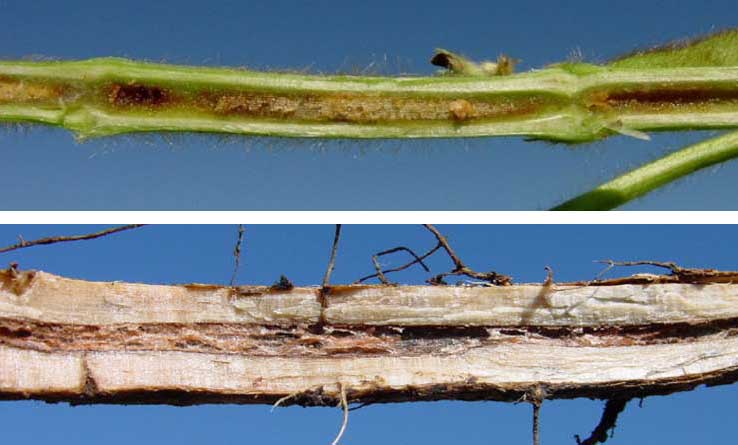
Figure 1. Split soybean stems showing BSR symptoms mid-season (top) and in a mature plant (above).
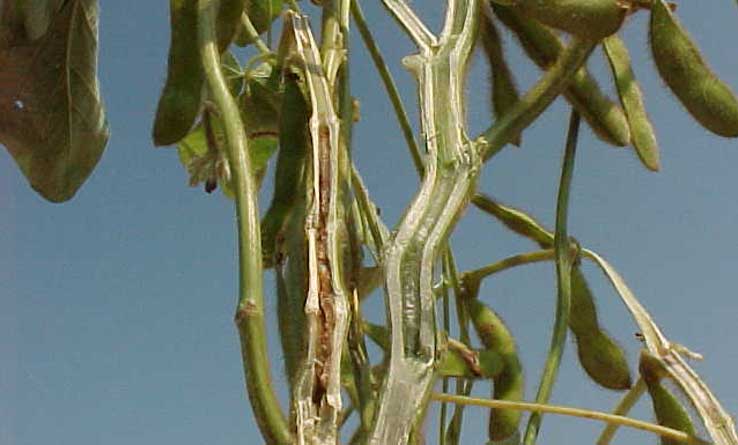
Figure 2. Split soybean stems showing BSR symptoms in the plant on the left. The pith is dark brown while cortex remains green in infected plants.
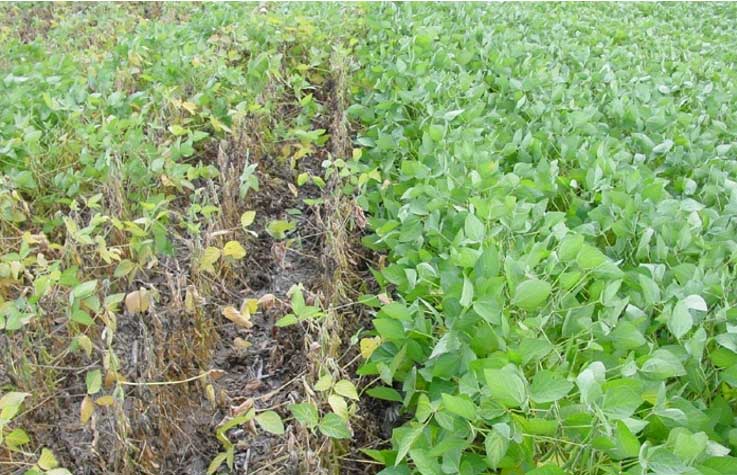
Figure 3. Brown stem rot symptoms on a susceptible soybean variety (left) compared to a resistant variety (right). Note wilting, premature defoliation and lodging. Symptoms occur after pod fill begins and are more severe with dry soil conditions.
Disease Facts
Identification and Symptoms
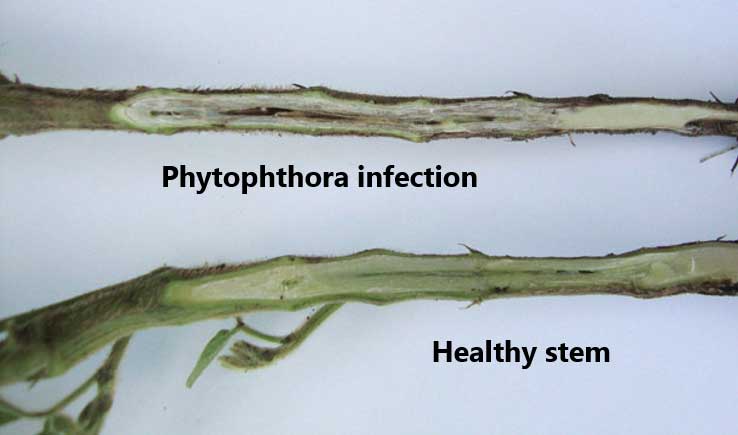
Figure 4. Split stem showing brown discoloration due to Phytophthora infection compared to a healthy stem.
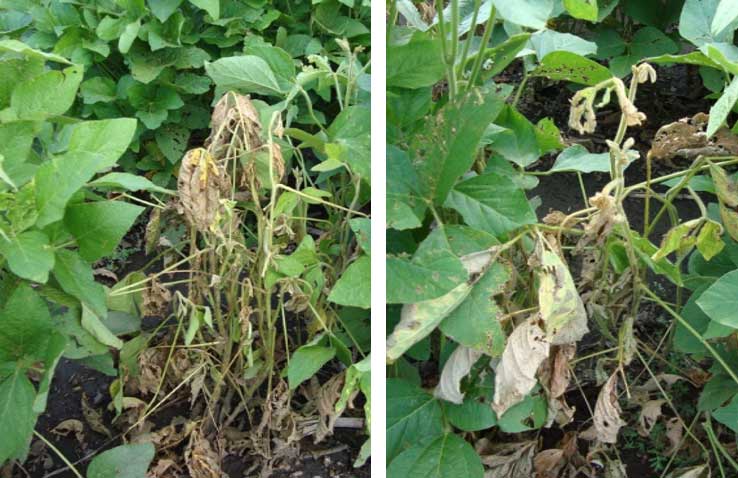
Figure 5. Wilted plants surrounded by healthy plants are a common sign of Phytophthora.
Management
Disease Facts
Identification and Symptoms
Management
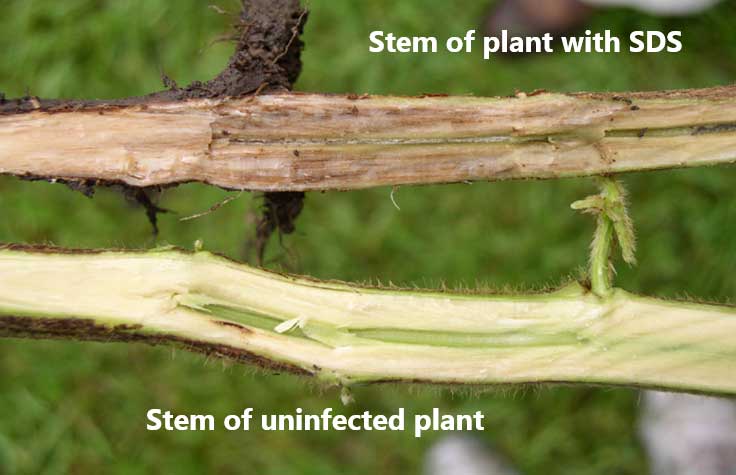
Figure 6. Split soybean stem on top shows stem symptoms of sudden death syndrome infection. Split stem on bottom is healthy.
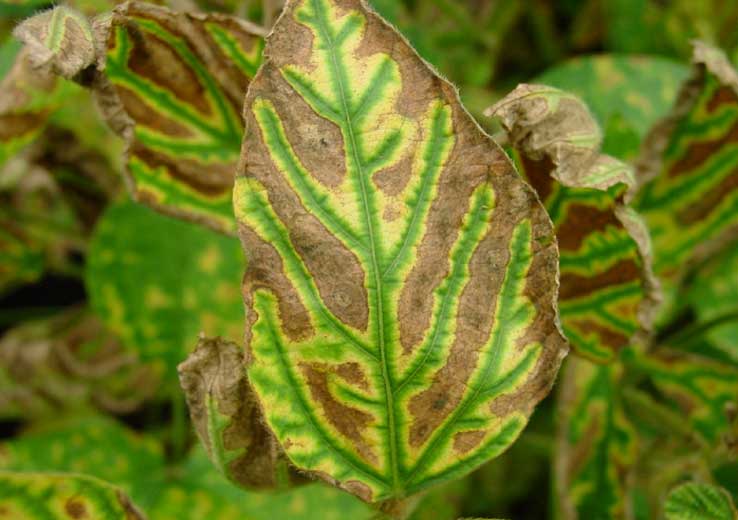
Figure 7. Soybean leaf showing symptoms of sudden death syndrome infection. Drying of necrotic areas can cause curling of affected leaves.
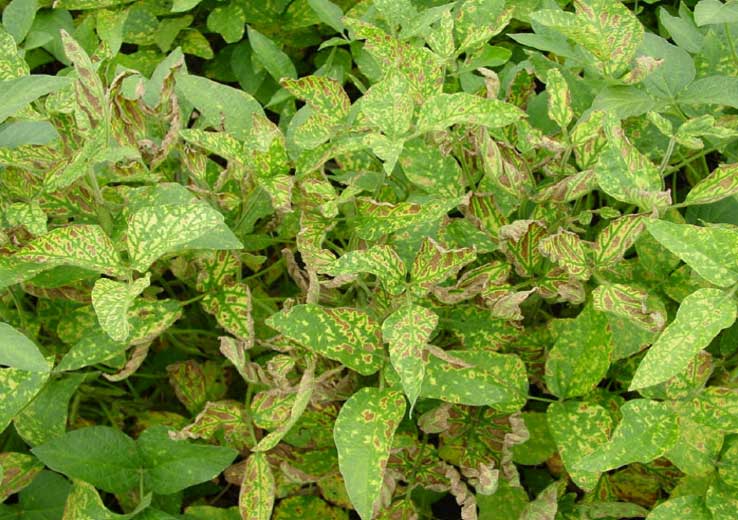
Figure 8. Soybean plants infected with sudden death syndrome. Necrotic areas of leaves dry rapidly. Leaves drop from the plant prematurely, but leaf petioles remain firmly attached to the stem.
Nematode Facts
Identification and Symptoms
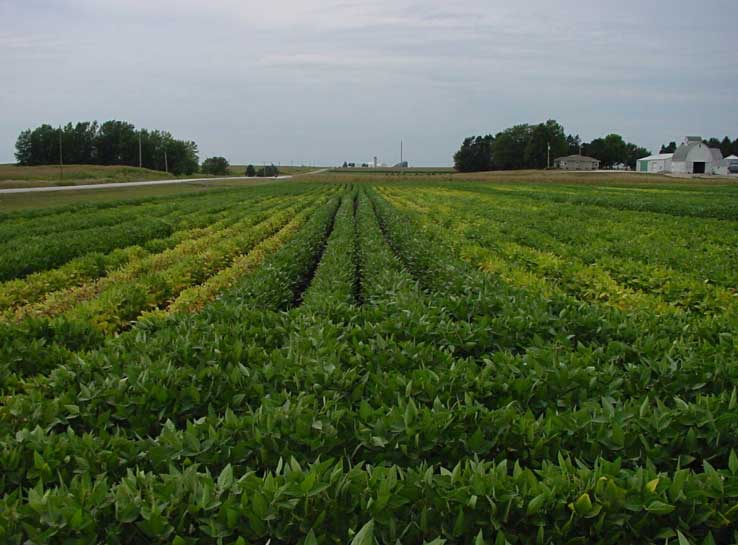
Figure 9. Strips of SCN-resistant and non-resistant soybean varieties in a SCN-infested field, showing damage to the non-resistant varieties.
Management
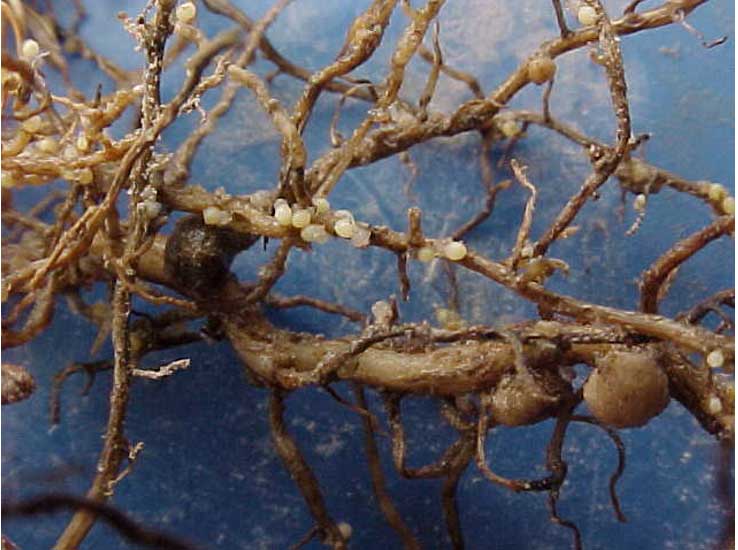
Figure 10. Lemon-shaped cysts of SCN visible on soybean roots.
The foregoing is provided for informational use only. Please contact your Pioneer sales professional for information and suggestions specific to your operation. Product performance is variable and depends on many factors such as moisture and heat stress, soil type, management practices and environmental stress as well as disease and pest pressures. Individual results may vary. Pioneer® brand products are provided subject to the terms and conditions of purchase which are part of the labeling and purchase documents.